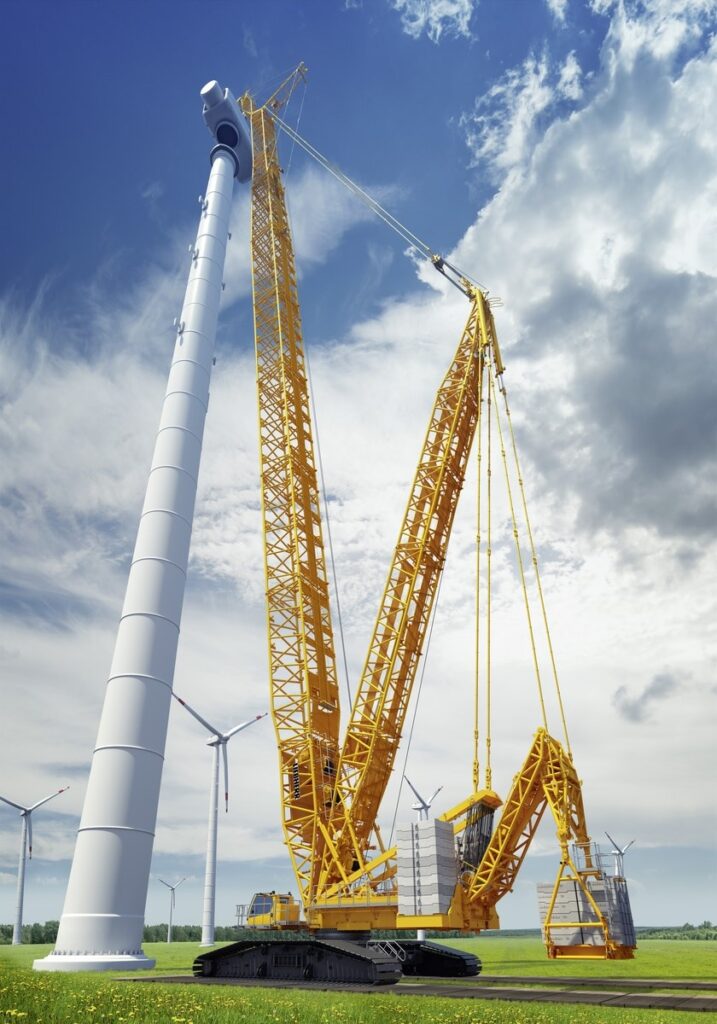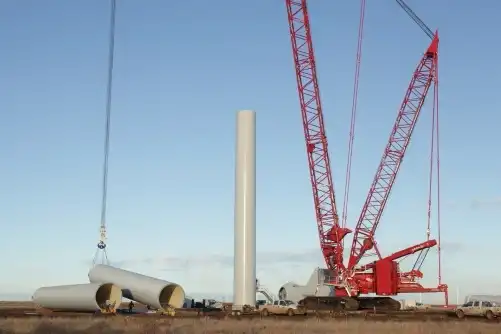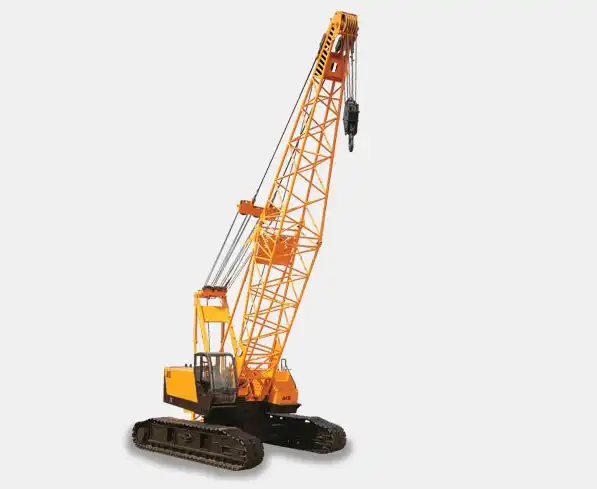Crawler crane manufacturers are expanding their product range and introducing advanced features for higher lifting capacity and greater safety, to meet the demand coming from infra development projects across India. Crawler cranes now feature a counterweight system that automatically positions the crane’s counterweight as required to match lifting demands. Crane lifting capability is optimised by automatic positioning of the counterweight; eliminating the need for the counterweight. Additionally, counterweight boxes are designed to be common across multiple crane platforms and are utilised on the latest models. There is a need for crawler cranes to have a higher lifting capacity, longer working radius, and a small working footprint, besides pick and carry capabilities, when required. Discussed below are different types of crawler crane technical advancements applied in different models in India.
Technical advancements of crawler cranes
Crawler crane for bridge construction and barge work
Latest range of crane is designed for a range of tasks, including alternative energy applications, road and bridge construction, and utility and barge work. The crane is enhanced with the optional personnel basket attachment with radio remote control. Its five-section main boom producing an impressive maximum tip height bifold offsettable swing away boom extension is added. The main boom sections are quickly and efficiently moved into the required positions using two horizontally mounted pins and a single telescopic cylinder. The models offer pick-and-carry capability across its standard load charts, providing best-in-class lifting performance and superb flexibility on the job. The machine’s innovative undercarriage offers several advantages in terms of reducing the need for site prep. The wide tracks create a large ground contact area, resulting in a 15.5 psi ground bearing pressure when no load is carried. This wide stance also produces enhanced stability, with the hydraulically extendable and retractable cross members offering a choice of three potential track spans in either symmetrical or asymmetrical track positions. With the new innovative undercarriage, there’s no need to pin the tracks or set it up on outriggers and you can just quickly transport loads or move from one static pick to the next.

Crawler crane with Main and Auxiliary Load Hoist Mechanism
In the newer models main and auxiliary hoist winches are driven separately by motor via gearbox. Operating the winch handle can control the winch to rotate to two directions, which are lifting and lowering of hook. Excellent inching function is equipped on the machine. Drums with fold-line grooves can ensure the wire rope threaded in multilayers. The main pump adopts positive flow proportional control. The main load winch motor adopts a piston motor of variable displacement and aux. load winch and boom hoist winch motor adopts a piston motor of fixed displacement. The operating components adopt two cross hydraulic handles and one dual travel pedal control valve to control various actuators proportionally. Control system consists of a power system, engine system, main control system, LMI system, auxiliary system and safety monitoring system. Swing system has three work modes to accommodate different needs. It is featured in small backlash, steady control, and excellent inching function. It also has a free slipping function and swing control on slope to avoid sudden braking. The crawlers can extend and retract via cylinders. During Work Mode, the crawlers must be extended, and be retracted during transport with crawlers on.

Crawler crane with increased lifting capacity range
The newer models come with a lifting capacity of 650 to 700 tonnes. It combines the benefits of the low cost transport of 600 tonne class crawler cranes with the performance of 750 tonne class lattice boom cranes. The base machine for the new models are based on the dimensions of the newer model. It is available with Quick Connection as an option. This means that the transport weight of the slewing platform can be reduced to around 42 tonnes to ensure low cost heavy haulage. The width of the various components is another important criterion for economic mobility. The basis of the high performance of the new 700 tonne crane is the new base machine, which delivers between 10 and 15 percent more lifting capacity. Furthermore, the 3.5 metre H lattice sections at the bottom of the main boom significantly improve the lateral stability of the entire system. The boom can be raised to a height of up to 198 metres, comprising the main boom at 102 metres and a luffing jib at 96 metres. These lattice sections enable the crane to be used in purely main boom mode with a length of up to 162 metres.

Conclusion
Manufacturers are giving complete importance to customers’ demands by providing cranes that can be deployed in varying job sites and conditions. Each machine is now available in numerous combinations to provide customers with the right solution as per lifting requirements. Based on application, the construction and mining segment has the most demand for crawler cranes in India.
Image Source: liebherr.com/en/ind/start/start-page.html, manitowoc.com/manitowoc, sany.in, schwingstetterindia.com, ace-cranes.com

